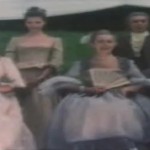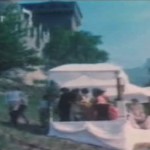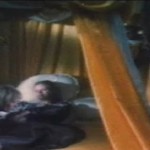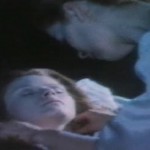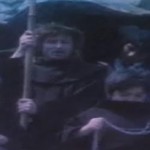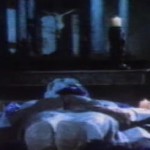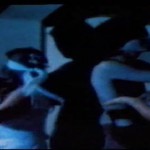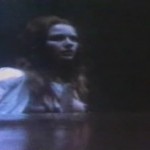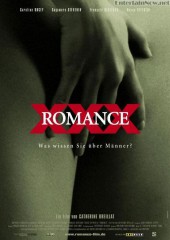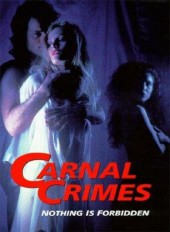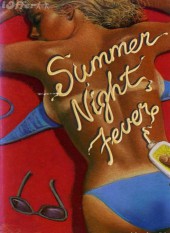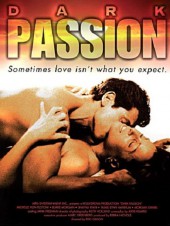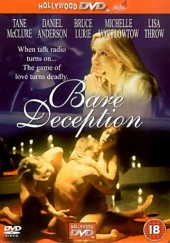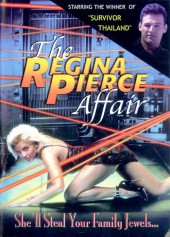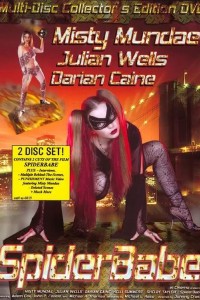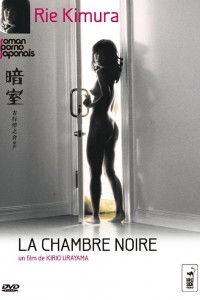
Year: 1973
Duration: 01:40:43
Directed by: Aldo Lado
Actors: Agostina Belli, Maurizio Bonuglia, Fred Robsahm
Language: Italian
Country: France, Italy
Also known as: Woman Buried Alive
Description:
With its combination of horrific murder, sordid secrets and dark romance, this very rare 1973 movie, directed by the brilliant Aldo Lado, is pure Gothic Fiction transferred to the screen. Believed to have originated with Horace Walpole’s 1764 novel, The Castle of Otranto, the Gothic Fiction genre was characterized by its penchant for death, decay and a quest for mysterious atmospherics, with such recurring elements as mysterious castles, sinister ruins, terrible secrets, hereditary insanity, curses, monks, nuns and, of course, tyrannic villains and the ever present persecuted maidens. Lado’s film is a beautiful distillation of many of these traits. […]
Aldo Lado’s story plays out against a backdrop of gorgeous locations with a marvelous real medieval castle with a clutter of courtyards, lush gardens, cavernous hallways and sombre rooms, surrounded by acres of sloping grounds; the ruined tower/watermill perched beside the stunning waterfalls (Cascate di Monte Gelato, a recurring location in Italian genre movies); a lake and the dense forest with its rocky slopes and carved outcrops. The forest is used in some lovely sequences, with dawning sunlight filtering through the fog-shrouded trees. During the course of the film, these settings are mostly represented in bright, beautiful sunlight, but, as the story progresses and the greedy schemes spiral down into debauchery and murder, the tone of the film also gradually darkens.
There is good evocation of the daily life in the 18th century, with an abundance of interesting visual details such as the sweaty blacksmiths at work, weavers sitting amid a cloud of wool or the doctor’s examination of Christine’s body, using a mirror to check for breath. In tune with the subject matter, the approach is somewhat more melodramatic than, for example, Juan Bunuel’s more naturalistic tale of vampirism, Leonor (1975), to which this movie shares a certain resemblance in mood. In an aside, Leonor also shares a somewhat similar curtained wooden bathtub.
In Sepolta Viva, the bathtub is used for some glimpses of nudity of the lovely Agostina Belli, shown as she slips out of her clothes to be bathed by some servant girls, awarding us with some nice views of her ass and breasts. There is certainly no lack of nudity in the film: Belli again shows off her considerable assets in a bout of lovemaking with Philippe and later, locked up in the tower, through her shredded nightgown. Furthermore, there is the occasional rape and orgiastic party.
In tune with the darkly romantic tone of Gothic Fiction, the film contains some wonderfully sleazy moments, not the least a sordidly necrophiliac sequence during which Ferdinand sneaks into the chapel, opens Christine’s coffin and with a lecherous expression playing on his features, slips his hand underneath her shroud to fondle her breasts, shots that are paralleled with his memories of an old hag concocting the poison used on the girl.
Aldo Lado’s eye for detail becomes especially apparent in a stunning, and quite sordid, sequence at the convent. After Christine’s ‘death’, Dominique de Matignan has renounced her worldly life to become a nun, and there are some gorgeous shots as she is introduced at the convent during prayers, a collection of detailed images of crosses, fingers handling prayer beads, lips moving in prayer, culminating in a candlelit procession of the nuns around the pillared courtyard galleries, their white habits beautifully contrasted with the shadowy convent surroundings. Meanwhile, Gaël, troubled with guilt and in love with Dominique for a very long time, sneaks onto the convent grounds and eventually into the nun’s room. Through a partially opened doorway, Gaël watches her undress, her breasts taped tight to her body with white cloth. As she tries to ward off his feverish advances, Gaël slices open the enveloping cloth with a dagger, revealing the nun’s breasts. With the other nuns gathered outside the locked door, alarmed by Dominique’s screams, Gaël roughly rapes her, taking her from behind, before ultimately stabbing her to death. His passion spent, the insane Gaël then slashes his own throat with the bloodstained dagger, while still lying on top of the dead nun.
As the tale progresses, Ferdinand’s ways become more and more debauched. There is a visually lovely sequence, introduced with a coach rattling to a halt at the castle gate and a servant guiding the visitors inside, carrying a lantern, across a candle-lit courtyard, and into a spacious room with musicians hidden (and outlined) behind a screen. What appears to be a mere musical evening at the castle, soon turns into a seedy and lecherous orgiastic feast, with the blindfolded guests groping and undressing one another while a drunken Ferdinand looks on. The drunken and erotic revelry at the castle is nicely offset and intercut with the sequence of Christine giving birth in the windswept tower across the river. Christine’s loneliness and agony are shown by Lado in loving close-up shots, her mouth in pain, teeth clenched, hands clasping around an iron bar and her eyes wide open … all marvelously contrasted with the barrage of grasping hands, lecherous pawings and undraped bodies at the ever more frivolous orgy in the castle.
But there seems to be no end to Ferdinand’s evil. Bored by the sexual escapades played out before him, he wanders the castle corridors in a drunken haze, coming upon lovely Odette’s bedroom. Peering through the doorway, he sees the girl asleep, one long bared leg sticking from underneath the white sheets. He softly sits down on the bed and slips his hand down the sleeping girl’s nightgown. Awakened by his impertinent gestures, Odette tries to fight off the advances of her drunken Lord, but the struggle soon turns to rape as Ferdinand starts ripping off her clothes. When Odette’s father tries to intervene, he is stabbed in the back for his troubles.
Although Lado’s film contains various sordid and sleazy elements, the actual horror aspect are minimal. There is however, one wonderfully atmospheric sequence during which Christine is poisoned. As a storm rages outside, rain beating down and lightning flashing, we see the young woman sitting at the shrine in her bedroom, as a mysterious character peers through the window. Behind Christine’s back, the shadowy figure sneaks into the room through the balcony door, and a gloved hand is seen slipping the poison into her drink. The candlelit room is beautifully appointed with its crooked arches, a huge fireplace, the sumptuous four-poster bed and Lado makes good use of depth and framing, showing Christine in the foreground praying as the murderer skulks around in the background shadows. Later, there are some foreboding shots of the two brothers, accompanied by their accomplice Morel carrying a stormlantern, smuggling the body of the murdered girl from the castle. Outlined against a darkening sky, they make their way across the crooked horizon, with the castle looming in the background flanked by huge windswept trees.
An intriguing darkly romantic tale of Gothic horrors, beautifully styled by one of the best visual artists in the genre.
Screenshots:
Download:
